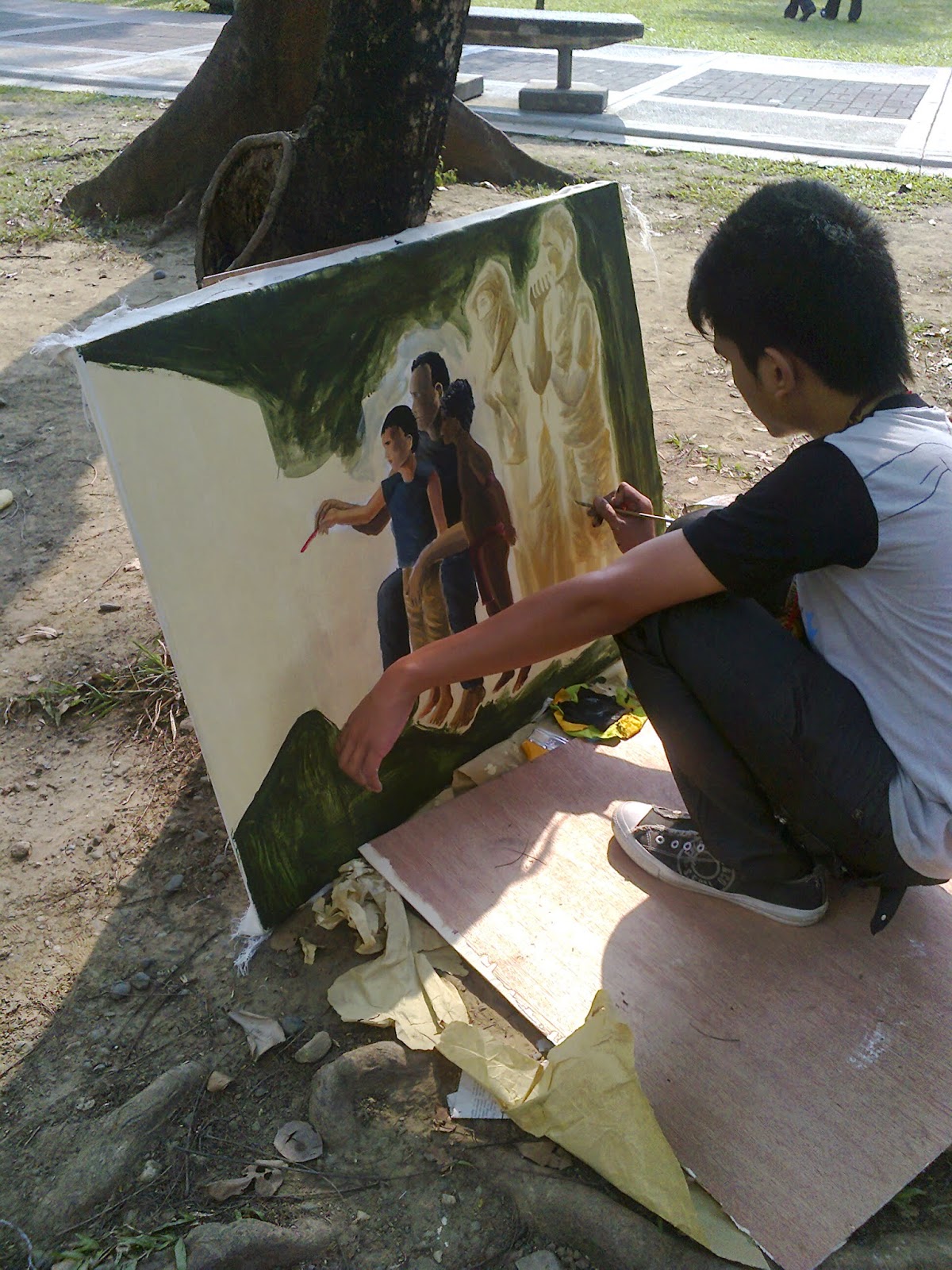Live Naturally: Take heed of your biological clock,and listen to Nature's call
Take heed of your biological clock. Remember to attune it with that of Nature all the time. Nature is the best teacher, healer and guardian for a happy, healthy and fulfilled living.
Dr Abe V Rotor
Living with Nature School on Blog

An emerging new generation before a wall mural of nature painted by the author at his residence in Barangay Greater Lagro in Metro Manila, 2015
Life is full of surprises and conflicts, which makes living a challenge, in fact a battle. We face this battle every day and everyone is engaged in it. And who is the enemy? Pogo, the comic character said, “The enemy is us.”
This dilemma of living is man’s oldest quest for a happy and contented life. Literature builds on this conflict. The plot in Shakespeare dramas is man pitted against himself. In Ernest Hemingway’s novel, For Whom the Bell Tolls, “the bell toll for no one but thee.” The Little Prince in Antoine de Saint-Exupery’s novel of the same title, tells us of a lost pilot in the desert visited by a young prince. The young visitor was no other than the pilot himself – the ideal, the faithful, the just, the courageous, the hopeful, forgotten by time and habit.
In our present world we face more and greater conflicts. Even with so-called progress and affluence, living has not been any better than that of our ancestor in health, peace, contentment, social bonding, and other basic parameters.
It is because they lived close to Nature, defined in many ways: Ceres, the goddess of bounty in Greek mythology, Venus the goddess of natural beauty, Maria Makiling guardian of a virgin mountain forest. Neptune guardian of the creatures of the sea. Nature as defined in herbal medicine, organic farming, a weekend spent in outdoor camping, of breast-fed children.
Experience nature with the cool wind of amihan, the first strong rain in May with lilting urchins braving the downpour, thunder and lightning. Listen to Nature’s orchestra played by the cicada, crickets, frogs, pelting rain in treetops, hissing and rumbling streams, lapping of waves on the shore, lullaby at the crib, whining of a dog at his arriving master. And many other natural events we may lured away from too much TV viewing, computering and malling.
Why, the nipa hut has become an extension of expensive houses. In this humble dwelling the residents would rather eat with fingers, enjoy a round of beer or brewed coffee. Here they take life casually and simply without fear of soiling the rug, staining the furniture, accidentally knocking fragile souvenirs, dirtying the marble floor. The nipa hut offers a more friendly abode, it is Filipino; it is Oriental. There’s a feeling of being at home, so with guests. And that relegates our palatial homes museums – museums within our lifetime.
The idea of living naturally is not a new movement. And now, it has blown globally as a revolution – call it environmental revolution, economic revolution, moral recovery, return to basics, and other names. For the first time Change is being challenged since the Renaissance in the fifteenth century.
Here are some ways to live naturally. This outline is a result of sessions, hands-on and on-site learning.
1. Broil instead of fry. Prefer fresh to processed. Native to genetically modified (GMO). Homemade to purchased.
2. Cook at home, eat less in restaurants and fast foods
3. Eat slowly (without TV), savor your food. You will eat less this way. Chances are, you don’t get fat easily.
4. Use glass and china, instead of plastic and styro containers
5. Take shower without heater – it is healthier.
6. Wrap food with banana leaves, instead of aluminum foil or plastic.
7. Avoid cosmetics as much as possible, Many cosmetics contain mercury, lead and other harmful ingredients.
8. Discourage atomized products and CFCs - they destroy the ozone layer.
9. Beware of promo and ad products. Don’t be guiinea pig of experimental products.
10. Don’t be fooled by attractive packaging. You are not getting the real worth of your money, and contribute to wastes as well.
11. Strengthen your immune system, build good health. Avoid too much hygiene. Over protection is bad in the long run.
12. Bike. Camp. Walk. Take heed of your biological clock. Remember to attune it with Nature’s – all the time. Nature is the best teacher, healer and guardian.
Please continue this list and pass it to your family, friends, and community.
LESSON on former Paaralang Bayan sa Himpapawid with Ms Melly C Tenorio
738 DZRB AM Band, 8 to 9 evening class, Monday to Friday









































